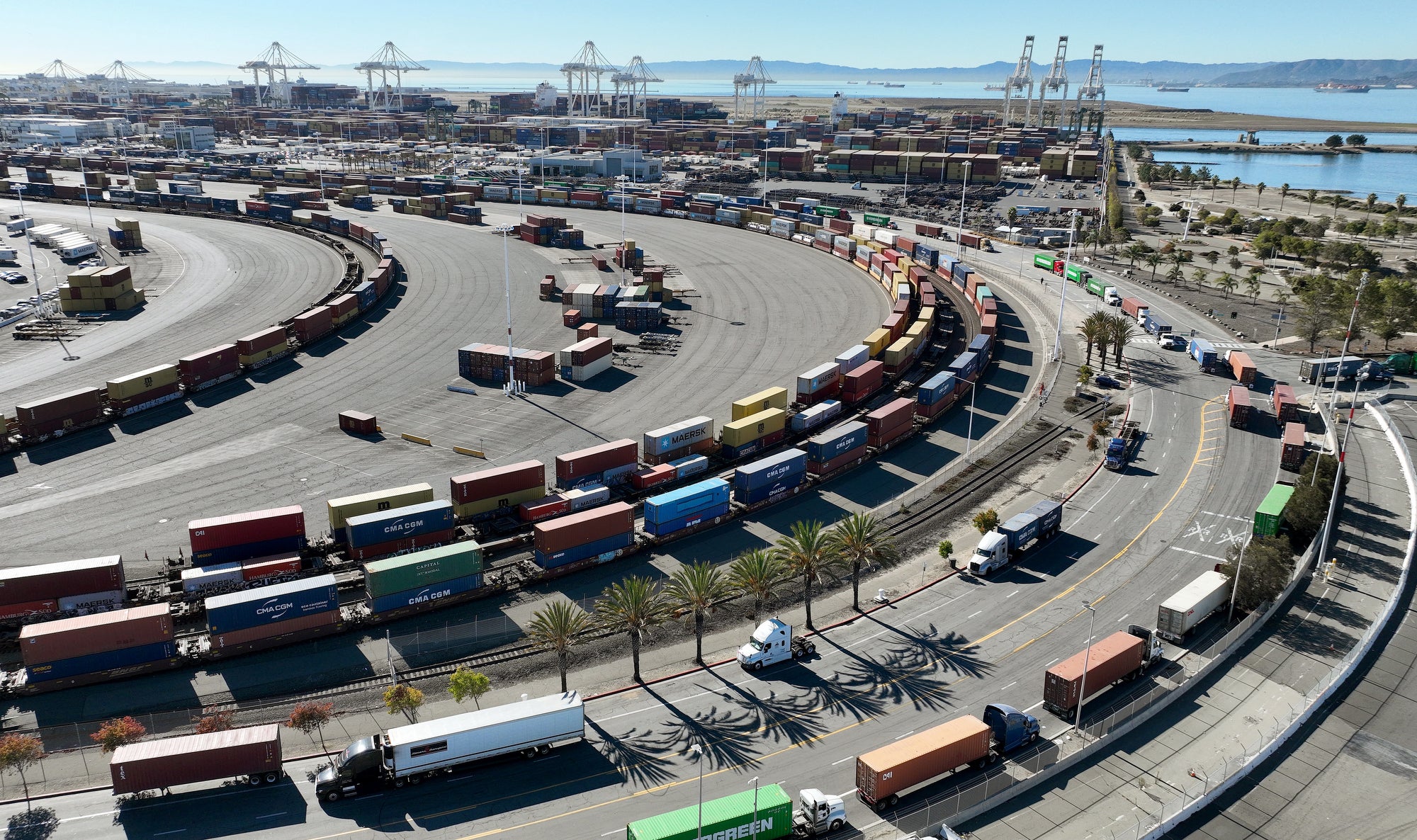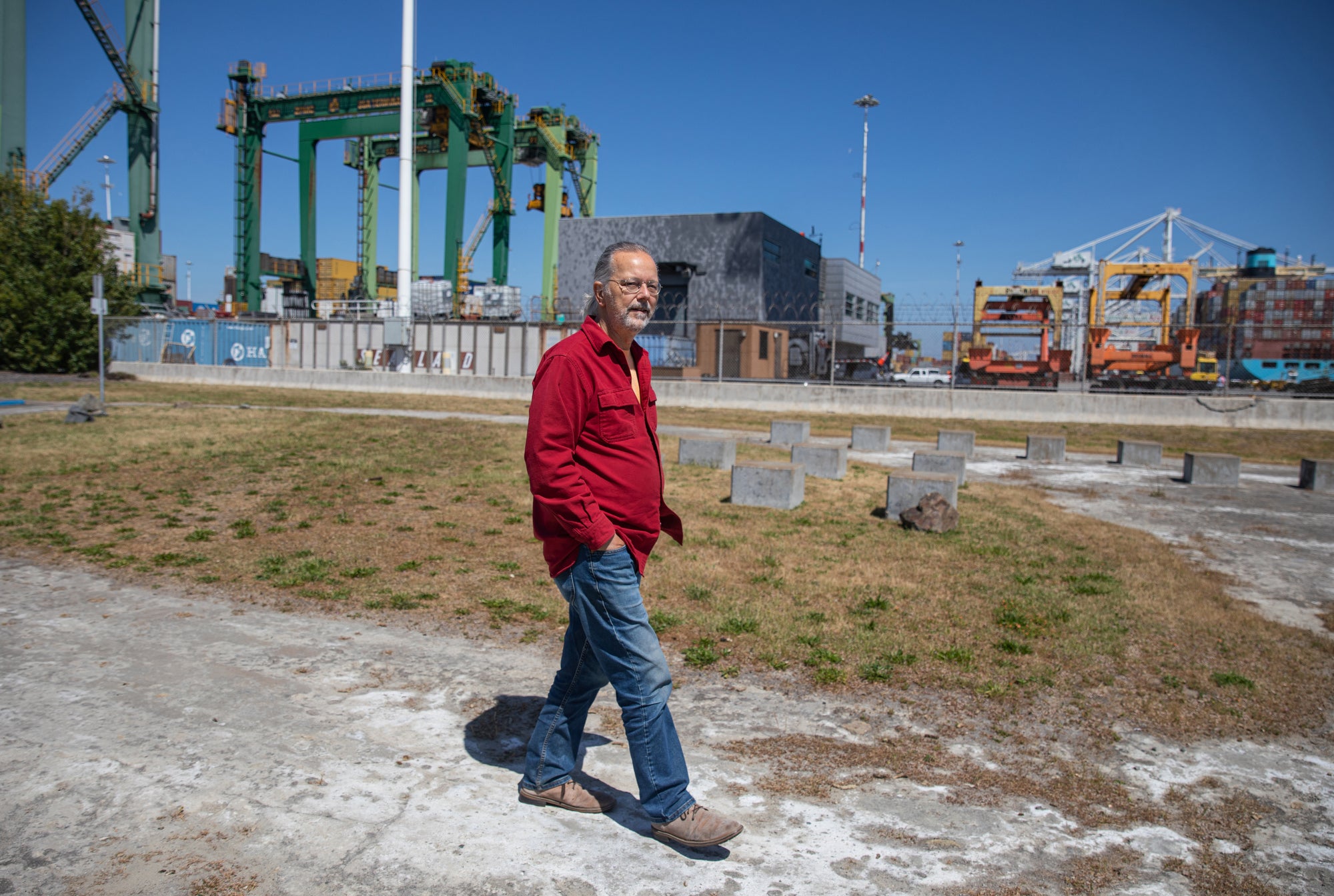How a Bay Area Community is Fighting Port Pollution
The Port of Oakland wants to widen its basins, bringing more megaships — and more pollution — to an already overburdened community.

This page was published 2 years ago. Find the latest on Earthjustice’s work.
Port pollution is one of the transportation industry’s dirtiest secrets, polluting the air of the millions of people in the U.S. who live near them. Ports are also a major contributor to climate change — which affects us all.
After years of advocacy by the West Oakland Environmental Indicators Project (WOEIP) and Earthjustice, one of the nation’s dirtiest ports, the Port of Oakland, has committed to cleaning up some of its most polluting equipment, a victory for clean air. But now the port wants to widen areas of the San Francisco Bay to enable cargo-carrying megaships to dock there more easily. The expansion project could not only bring even more pollution and traffic congestion to the frontline community of West Oakland – which is already one of the most pollution-burdened parts of the state – but to the entire Bay Area region via megaships and the additional trucks, trains, and equipment needed to move the added cargo.
WOEIP is fighting back with the help of Earthjustice, and it has the momentum of statewide electrification efforts on its side. Earthjustice’s ports work is part of a broader effort to transition our economy to 100% clean energy, which includes our transportation system, the largest source of greenhouse gas emissions in the country.
Help us win this fight by telling the Port of Oakland to thoroughly study the impacts of the expansion project on West Oakland residents and the surrounding region.
Elected officials are already taking note about the risks from the project. Recently the office of U.S. Representative Barbara Lee wrote both the Army Corps and port leadership, urging them to fully study the environmental impacts and involve the public and West Oakland community in the process in a meaningful way.

In an aerial view, shipping containers sit on trucks and train cars at the Port of Oakland on October 24, 2022 in Oakland, California. (Justin Sullivan / Getty Images)
West Oakland is only a mile from the San Francisco Bay. But the shoreline is almost entirely controlled by the Port of Oakland, says Brian Beveridge, co-director of WOEIP.
“There are kids in this neighborhood who have never really seen it,” he says.
For nearly a decade, WOEIP has partnered with Earthjustice to fight the pollution stemming from the sprawling freight and logistics operations at the port. Many of our consumer and agricultural products pass through port harbors, which contain ships and cargo handling equipment that burn some of the dirtiest fuel on the planet.
At the ports of Los Angeles and Long Beach, for example, pollution from harbor vessels reaches levels 90 times what the U.S. EPA considers safe. Diesel pollution from ports has even been shown to register at dangerous levels as far as 30 miles away.
Much of this pollution comes from the diesel-powered vehicles that keep port operations humming. This includes the many barges, tugboats, and ferries that bring cargo to shore, the cranes and forklifts that haul it across the port yard, and finally the trucks, semis, and trains that deliver it to warehouses across the country.

Shipping containers on trailers lined up on a West Oakland street. (Chris Jordan-Bloch / Earthjustice)
Despite their huge environmental impact, ports lag other industries in the transportation sector in cutting emissions. In the past, regulators have been slow to hold them accountable, and the freight industry itself does everything it can to pass accountability off to others along the operations chain.
“Without strong air quality standards, these entities have historically avoided efforts to innovate and electrify their operations,” says Earthjustice attorney Marie Logan. “As a result, they have a free pass to continue polluting.”
The Port of Oakland may finally be cleaning up its act, though, thanks in part to strategic Earthjustice litigation and advocacy efforts in partnership with WOEIP. In 2019, it approved an air quality plan designed to drastically cut diesel and greenhouse gas emissions from its operations. It also recently adopted an environmental ordinance that will commit its tenants (who operate large marine shipping companies) to transition their operations to cleaner equipment — the first meaningful attempt to make port tenants and operators take responsibility for their pollution, too.
But the port’s proposed widening project — in coordination with the U.S. Army Corps of Engineers — now threatens to undercut these efforts.
In the proposal, the Port and Army Corps claim to want to widen the Oakland Harbor in the San Francisco Bay as a mere construction improvement. What they don’t admit is that this widening could mean an increase in traffic and pollution in West Oakland – a community that quite literally cannot afford it – and across the Bay Area as it absorbs more visits from these dirty megaships and the additional trucks and congestion spilling out onto our freeways and freight corridors.
These megaships are almost four times the length of a football field. And each one can carry more than 19,000 containers that need to be unloaded by polluting cargo handling equipment and then transported by truck or rail, further exacerbating the terrible truck traffic and corresponding pollution throughout West Oakland and the region.
Asthma hospitalizations for West Oakland residents are already 88% higher than the national average. More emissions billowing from the trucks, trains, and ships at the port will only worsen the ongoing public health crisis. Yet neither the port nor the Army Corps seem willing to stop barreling ahead with this proposed expansion project.
Earthjustice, together with WOEIP, argues that the agencies’ actions run afoul of bedrock environmental laws that communities use to protect themselves from poorly planned projects. In June 2023, we submitted comments to the Army Corps on behalf of a broad coalition of groups, including WOEIP, Center for Biological Diversity, Sierra Club, Environmental Defense Fund, Pacific Environment, and West Oakland Neighbors raising serious flaws in the Corps’ analysis under the National Environmental Policy Act. Earthjustice supporters and concerned members of the public also submitted over 1,400 comments, telling the Army Corps to fix its flawed analysis.
“A public agency can’t propose big projects that affect the whole region simply because it wants to,” says Beveridge of WOEIP. “This expansion would make it easier for megaships to come here and yet the port has not calculated its impact on their neighbors.”

Brian Beveridge, co-director of the Oakland Environmental Indicators Project (WOEIP), photographed at the Port of Oakland in West Oakland, California. (Jana Ašenbrennerová for Earthjustice)
Earthjustice’s Logan says that the port should instead focus its efforts on completing its transition to zero-emissions equipment, which includes committing to a firm target date for the conversion of all operating equipment and trucks to zero-emissions technology. There are massive amounts of state and federal funds available now, including in the Inflation Reduction Act (IRA), to help with this effort.
“Doubling down on port expansion makes little sense and threatens to set the port back on its path to zero-emissions,” says Logan. “The port is dumping tons of time and resources into this proposal, without considering the impact on neighboring communities.”
Now that the Army Corps is wrapping up its part of the environmental review process, the Port of Oakland is conducting its own environmental report as required by law, and we have an important opportunity to tell the port that it must not repeat the Corps’ mistakes and instead thoroughly study the impacts of this project on West Oakland residents and the surrounding region.
Originally published on May 24, 2023.
The California Regional Office fights for the rights of all to a healthy environment regardless of where in the state they live; we fight to protect the magnificent natural spaces and wildlife found in California; and we fight to transition California to a zero-emissions future where cars, trucks, buildings, and power plants run on clean energy, not fossil fuels.